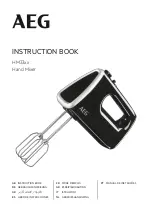
R
ef
er
ences
Glossary
DME64N/DME24N Owner’s Manual
72
RS-232C
A serial communication protocol that allows data transfer over distances of up to 15 meters.
RS232C interfaces usually employ 9-pin D-sub connectors. “RS” stands for
“Recommended Standard,” and one of the standards developed by the EIA (Electronic
Industry Alliance).
RS-422
A balanced serial communication protocol that allows data transfer over distances of up to
1 kilometer. RS-422 offers higher data rates and greater reliability than the RS-232C
protocol.
Sampling Frequency
The number of times per second an analog audio signal is “sampled” when it is being
converted to digital audio.
Scene
A complete audio setup including configuration data and the related component preset
parameters. Up to 999 scenes can be stored for each zone in a DME64N/24N audio
system.
STP (Shielded Twisted Pair) Cable
A data transmission cable consisting of a shielded twisted pair. This type of cable is more
resistant to noise and interference than UTP (Unshielded Twisted Pair) cable.
Network Switch
A network switch which automatically connects only ports through which communication is
currently taking place. This reduces network load while maximizing security. This type of
switch can often mediate between devices having different transmission speeds and
standards.
USB (Universal Serial Bus)
A serial bus primarily used for connecting peripheral devices to computer equipment.
The USB 1.1 standard allows data transfer rates of up to 12 Mbps.
UTP (Unshielded Twisted pair) Cable
A data transmission cable consisting of an unshielded twisted pair. This type of cable is less
expensive and more commonly available than STP (Shielded Twisted Pair) cable, and is
widely used in 10Base-T and 100Base-TX network connections.
Word Clock
A signal used to synchronize multiple interconnected digital audio devices. The word clock
frequency will be the same as the sampling frequency of the audio signal being processed.
Terms
Explanations









































